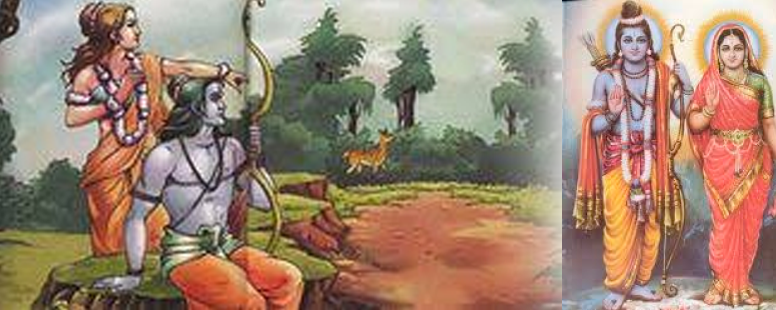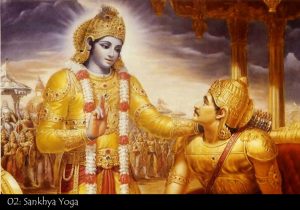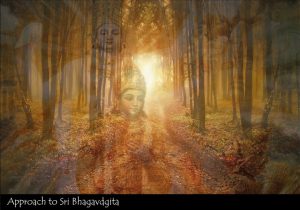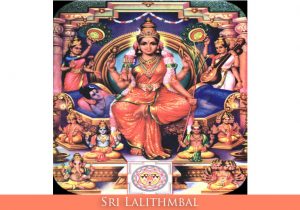Kolaru Pathigam – Verse 2
Saint Thiru Gyana Sampanthar
erudhERi EzhaiyudanE
ponpodhi maththamAlai punal sUdi va~ndhu en
uLamE pugu~ndha adhanAl
onbadho dondRO dEzhu padhinetto dARum
udanAya ~nAtkaL avaidhAm
anbodu ~nalla ~nalla avai ~nalla ~nalla
adiyAr avarkku migavE
Meaning
eNbOdu = with bare bones; koM-bO-du = horns of animals; Amai = tortoise shell; ivai = these; mArb-ilaNga = on the chest; eru-dEri = mounting on the bull; EZhai udanE = with Parasakthi; pon-podhi = embedded with gold; unmaTTa-mAlai = garland made-up of unmatta flower which is intoxicating ; punaL-sUdi = having the fleeting river on the tangled hair; vandhu = by coming ; en ulamE = unto my heart; pugaNda adanAl = since you have entered; Onba-dOdu-one-rod-Ezhu = nine, one and seven; padhi-neTTOd-Arum= eighteen and six; udan-Aya = at once analyzed; nAL-gal avai-dAM = all these days; aNbodu = with love; naLLa naLLA = the best in the best; avai naLLa naLLa = those that are the best in the best; adiyAr-avarkku = for the true devotees; migavE = be in excess;
Wearing the garland of bones (of humans), horns of (animals) and the shell of tortoise on the chest, sitting on the bull with the escort Parvati, with a garland of intoxicating fragrance of golden Unmattam flowers, the holy river (Ganges) on the head tied within the matt of hair, O Lord, You have entered into my heart; Nine, One, Seven, Eighteen and Six as such analyzed so all these days, be filled lovingly with the best of best, of all the best of best in abundance be for Thy true devotee!
In the form of Kala Bairava, Saint Gyana Sampanthar is adoring the Parabrahmam in this verse 2 of “Kolaru Pathigam”. ‘Kol’ refers to the personifications of cosmic energies that impact our lives by bringing effect on our ‘Uzh’ or Karmic actions from our current and previous lives. Every cause has an effect and so our actions in the past will have impact in our life now or in the future. How can we modulate the effect of these – especially the ill effects of our “Uzh”. Only solace is the divine feet of God and His grace. Saint Sampanthar sees Gods grace as the sword that will cut asunder the burden of our Uzh, in other words to nullify the impact of ‘Kol’. That is what ‘Kol Aru’ means. ‘Pathigam’ refers to ten verses.
Bones and skin are the main elements that define the form for any living being, human or animal. Lord Siva is adored with the human bones; else- where He is also adored as the Onee wearing the skin of elephant. He is also wearing the horns of animals. God is within every life form; His abode is the heart of hearts, the innermost sanctum of our consciousness. As He pervades within us, our internal forms made-up of bones must be the external garlands for the Paramatman, imbibed as the Self within. Perhaps that is what these garland of bones and horns signify. He wears ‘tortoise’ shell; tortoise can pull all its external organs into its hard shell; Similarly is the Paramatman Who can withdraw all desires and thus all manifestations unto Himself at the time of assimilation. Perhaps to signify this power of projection and dissolution, Lord is adored with the shell of tortoise! He is wearing unmattam flower; ‘Unmatta’ also means crazy; As Saint Sundarar called Siva as ‘crazy’. He is called so because His divine play is beyond our comprehension.
Also interesting is the word “Ezhai” or “poor” to indicate the escort of Lord, Mother Parvathi; How can Parvathi who is Para Sakthi, the Lalitambal, Whose divine play is nothing but the expression of Lord’s will, Who is the cause of infinite manifestations in the universe – be called ‘poor’!
I assume that it is only to express the inseparable bond between the Lord and His escort. Para-sakthi is none other than Lord Siva; but She is only a dynamic representation of Sivam. Without Sivam, Sakthi is poor. There is also another way to look at the word “Ezhai” which represents a shortened form for “Enthizhai” which represents the projected beauty. Parvathi is the manifestation of Siva’s power – the projected beauty of Parabrahmam.
Lord Siva’s head is filled with the fleeting river Ganges, a significance of His benign grace to bestow the best prosperities for all; Spiritually, the flow of Gnosis from the apex of the head is indicated. Lord Shiva, thus emerges and is seated on top of the bull. He is ‘pashupathi’. Pashu means animal and generally we take to cow. Pathi means the lord; All souls are represented by Pashu. He is our Lord. By being on the bull, He is shown as the Lord who reigns over all.
He enters into the hearts of devotees. In the case of Saint Gyana Sampanthar, the Lord’s arrival is indicated by the word ‘pugaNda adanAl”. In Tamil, “pugunthu” signifies a very special case of entry. It is like penetrating into something where the entrance is not completely open or ajar. It is like entering at a sudden pace or by stealth; Lord, how nice of You to come into my heart which is still not matured to hold your glowing presence? How nice of You to penetrate into my heart, for which the entrance is still entangled with worldly desires? How nice of You to reveal within me, even though I am unaware of your entry? In other words, when our yearning is intense and our prayers pure, He shows His divine presence within our hearts – as if He slides into us without our knowledge!
Then comes the numbers in the verse – the question of which triggered the contemplation in my heart of this verse for the first time.
The verse assures the best of the best at all times for the true devotees of Lord. But the Saint had given specific parameters to indicate the span of days of such absolute bliss.
The concept of time is a the greatest mystery by the very understanding and realization of which, we all will be one with God and thus completely void of any want. But for now, as ordinary mortals on earth, our prayers are for the blessings through out our life- time on this earth and may be beyond.
Time on earth is largely defined by the location, and the relative movement of earth around the Sun. The Vedic Seers knew that all heavenly bodies are moving relative to one another. They also knew that any moving body could be treated as the fixed reference for the computation of relative motions or locations of other bodies. What could be a better choice than our own abode – earth! That is why (not because of any ignorance as many in the West made out to be) our forefathers placed earth as the centre of the Universe; they have projected astounding and highly verifiable cosmological calculations on such basis.
Panchanga is one small but perhaps the one of the very few living examples of such mastery still prevailing . The five limbs of Panchanga (or five parts in Sanskrit) connects a given time in terms of Tithi, Vaara (day), Nakshatra, Karana and Yoga.
Tithi is the time duration for the Moon to increase its position around the Sun by 12 degrees. Therefore there are 30 thithis in a lunar month, split into two pakashas or fortnights of 15 thithis each; Suklapaksha or bright fortnight is from Amavasya to Poornima; Krishnapaksha or dark fortnight is from Poornima to Amavasai; In suklapakasha, the first thithi represents the movement of moon from 0 degree to 12 degree around sun, the second from 13 to 24 etc. In krishnapakasha, the first thihi represents the movement of moon from 181 to 193, the second from 194 to 205 etc.
Vara represents the 7 day with each day divided into 24 ‘horas’ (or ‘hours’ in English). Sun, representing our Soul, Moon representing our Mind, and five key planets as the representation of the five elements constituting of our physio-psychic tendencies are associated to each day: Ravi vaara or Sunday (Banu-Sun), Somavaara or Monday (Soma-Moon), Mangalavaara or Tuesday (Mangala or Angaraka – Mars) Bhudhavaara or Wednesday (Budha- Mercury), Guruvaara or Thursday (Brhaspati – Jupiter), Sukravaara or Friday (Bhrigu – Venus) and Sanivaara or Saturday (Sani-Saturn).
Nakshatra does not refer to any of the billions of ‘stars’ that we see on the night sky. It refers to any of the 27 segments of the zodiac belt that contains the path of the Moon, as defined by our Seers. This zodiac path is the region extending about 9 degrees on the either side of the elliptic; the elliptic is the great circle of celestial path of the earth seen from the Sun (or) the path of the Sun among the stars. Since Moon completes the circuit of its path in about 27 1/3 days around the Sun, our Vedic Sciences has divided the zodiac path by 27 equal parts, and called each segment as a ‘Nakshatra’. Each Nakshatra thus represents about 13 degrees 20 seconds of the zodiac path. The first segment of the Moon 0 to 13 degrees 20 seconds is the named as the first nakshatra – Ashwini. Like this, there are 27 Nakshatras. According to Vedic Sciences, our life is controlled by our mind, which is represented by Moon; Moon is impacted by its position on the zodiac path, which is divided into 27 Nakshatras; therefore Vedic Sciences declare that Nakshatras are important in our life on earth. The segment of the Moon at the time of one’s birth is called the janma nakshatra or loosely translated as ‘birth star’, which is based as the reference for calculating specific astrological aspects of any individual.
Karana is another finer measure; it represents the time in which the difference of the longitudes of the Sun and the Moon increases buy six degrees. In other words, it is half of a thithi. The Seers have specified 7 karanas as a dynamic ones (Bava, Baalava, Kaulava, Taitila, Gara , Vanija and Vishti) and 4 karanas fixed (Sakuni, Chatushpada, Nagava and Kintughna).
Yoga is yet another finer measure; it represents the time period during which the joint motion of the Sun and the Moon increases in longitude by 13 degrees 20 seconds. Simple calculus will show that 27 Yogas will repeat themselves in cycles of 27 days. These 27 yogas are namely: 1) Visakumbha 2) Priti 3) Aayushman 4) Sowbhaagya 5) Sobhana 6) Atiganda 7) Sukrama 8) Dhriti 9) Sula 10) Ganda 11) Vriddhi 12) Dhruva 13) Vyaghata 14) Harshana 15)Vajra 16) Siddhi (Asrik) 17) Vyalipa 18)Variyan 19) Parigha 20) Siva 21) Siddha 22) Saadhya 23) Subha 24) Sukla (Sukra) 25)Brahma 26) Indra 27) Vaidhriti. In practice, Vedic astrologers, compound the effect of Nakshatra with Yoga and deduce mainly into few auspicious Yogas (such as Amrita, Siddha) or bad yogas (Marana, Utpada) etc.
Seasons are six to be considered as the impact on our environment. Sprint or Vasantha Ritu is during the two months Chitra and Vaisaakha (Chittirai and Vaikashi); Summer or Greeshma Ritu in the months Jyeshtha and Aashaadha (Aani and Adi) , Rains or Varsha Ritu in the monts Sraavana and Bhaadrupada (Avani, Purattaasi), Autumn or Sarad Ritu during Asweena and Kaartika (Aaipasi,Kkartikai), primary winter or Hemanta Ritu during Maargasira and Pushya (Margazhi, Tahi) and secondary winter or Sisira Ritu in Maagha and Phaalguna. (Maasi, Panguni).
So, 15 thithis in 2 pakshas, 7 days, 27 nakshatras, 11 karanas, 27 yogas and 6 seasons are the critical parameters of life-time on earth. The verse seeks the best of best in all these times.
Now if we look at the lines of the verse:
Onba-dOdu-one-rod-EZhu, padhi-neTTOd-Arum, uda-nAya nAL-gal avai-dAM
“Onbadu” is 9. “onerodEhzu” means 1 and 7. “padhi-neTTOd-Arum” means 18 and 6.
- By adding 18 and 9, we get 27 which may denote 27l Nakshatrams and 27 Yogams.
- Reference to vara or week days is given by the number 7.
- The number 6 indicates the six seasons.
- Adding 9 and 6 gives 15, referring to the thithis.
Also by itself, the number 9 may mean all the Nine ‘Grahas’. (Please note that the term “planet” is not a correct translation for the word ‘graha’ in Sanskrit. Planet is satellite object rotating a Star like Sun; but the term graha in Vedic Sciences refers to logical abode where the influencing cosmic energies are located based on the positions of celestial objects in the zodiac path with reference to the Earth.)
If so, what would 18 mean? We know 18 is the only positive number that is twice the sum of its digits. What else we could imagine? First things comes to our mind is that there are 18 chapters in Bhagavd Gita, delivered at the greatest war which lasted for 18 days. There are 18 Puranas and 18 Upa-puranas. Lord Aiyappan graces the devotee who surpass the eighteen steps.
What is indicated by the number One?
The troubles to us are not only coming from external sources which we tried to implicate at the ‘Kol’, ‘Uzh’, external environment; during the present life, if our discriminating intellect is not able to control our vacillating mind, then we will continue to be entangled with desirous deeds and thus accumulate the burden of ‘samsara’ – the cycle of birth and death. So by the number “1”, I think, one’s own mind/intellect is indicated. How can this fit the sequence, as other numbers are relating to the parameters of time? This is because, all measures of time and space are nothing but the creations of mind; with the right contemplation, mind , represented by “1” can help to surpass all times that are indicated by all other numbers.
Is such interpretations valid? Not sure….Are we allowed to imagine such inspired meaning for these coded words? This I am sure, because this is what is also instructed by the Saint Gyana Sampanthar. He says in the last lines “udanAya ~nAtkaL avaidhAm”. “Aya” means to research, to investigate, to discriminate. After giving all these coded numbers, the Saint is instructing us to investigate! So our attempts are not condoned.
God bless.
Mee. Rajagopalan






